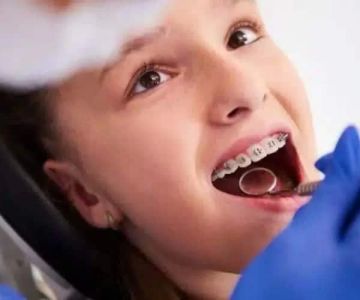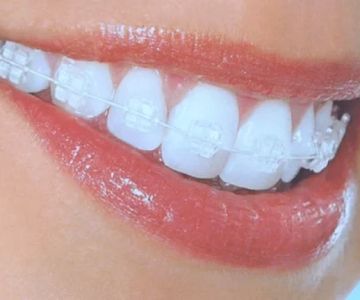Are There Any Dietary Restrictions During Orthodontic Treatment?
Undergoing orthodontic treatment, whether with traditional braces or clear aligners, is a transformative process to improve dental alignment and oral health. However, achieving the best results requires more than just regular visits to the orthodontist. Diet plays a crucial role during this time, influencing the effectiveness of the treatment and the overall oral health of the patient. In this article, we will explore the dietary restrictions and considerations necessary during orthodontic treatment, helping you navigate through this journey with ease and success.
Understanding the Importance of Dietary Restrictions
When wearing braces or aligners, certain foods can become problematic, not only risking damage to the orthodontic appliances but also potentially harming teeth and gums. Adhering to recommended dietary restrictions helps prevent prolonged treatment and ensures that your orthodontist’s interventions are most effective. Eating appropriate foods facilitates better hygiene, minimizes the risk of cavities, and protects the appliances from unwarranted breakage. By following these guidelines, patients can expect smoother progress in their orthodontic treatment.
Foods to Avoid and Their Impact on Orthodontic Appliances
Certain foods can physically damage braces by bending wires or breaking brackets, leading to inconvenient repairs and extended treatment times. Hard foods such as nuts, candies, or popcorn kernels pose a significant risk, while sticky foods like caramel and chewing gum can adhere to brackets, making cleaning a challenge. Crunchy fruits and vegetables should be cut into smaller, manageable pieces to avoid exerting excessive force on braces. Avoiding these foods not only protects the orthodontic appliances but also maintains oral health, preventing the discomfort associated with damaged devices.
Nutritional Considerations for Maintaining Oral Health
Maintaining a balanced diet rich in essential nutrients is imperative during orthodontic treatment. Foods high in calcium, like dairy products, play a vital role in strengthening teeth enamel, while vitamin-rich fruits and vegetables contribute to gum health. Protein-rich foods, such as lean meats and legumes, are beneficial for overall repair and growth. Integrating these nutrients into your diet can complement orthodontic treatment by promoting stronger teeth and gums, thus supporting the integrity of your dental structure during the process.
Safe Food Options: What You Can Enjoy
Despite the restrictions, there are plenty of delicious and safe food options to enjoy. Soft fruits like bananas and berries, steamed vegetables, pasta, and soft bread are just a few of the many foods that pose minimal risk to braces. Incorporating soft textures helps in enjoying meals without worry. Additionally, utilizing cooking techniques such as boiling, steaming, or slow-cooking can make tougher foods more suitable for consumption. By exploring different recipes and food preparations, patients can continue to enjoy a varied diet during treatment.
Practical Tips for Managing Diet During Treatment
Avoiding problematic foods and focusing on safe ones can be seamlessly integrated into your daily routine with a few practical steps. Planning meals and snacks ahead of time helps ensure that dietary restrictions are met without compromising on nutritional needs. Regular follow-ups with your orthodontist, consultation with a nutritionist, and staying informed about dietary recommendations provided by trusted sources like Dentistry Toothtruth can further guide your dietary choices. These strategies, coupled with good oral hygiene practices, will help navigate the dietary limitations effectively.
Conclusion and Actionable Recommendations
In conclusion, while orthodontic treatment may impose certain dietary restrictions, understanding and adhering to these guidelines are fundamental to achieving optimal outcomes. By avoiding hard, sticky, and sugary foods and focusing on nutrient-rich, soft options, patients can protect their orthodontic devices and promote dental health. Consistent communication with your orthodontist, along with practical meal planning, can ease the transition and maintenance of a new diet during this period. With careful consideration and informed choices, patients can enjoy a successful orthodontic journey.




 Westgate Dental Arts
Westgate Dental Arts Coventry Family Dental
Coventry Family Dental Familia Dental
Familia Dental Dr. Daniel S. Fife, DDS
Dr. Daniel S. Fife, DDS Dentistry At Suburban Square: Michael I. Wollock, DMD
Dentistry At Suburban Square: Michael I. Wollock, DMD Comfort Care Dental
Comfort Care Dental The Importance of Oral Health Education During Pregnancy for a Healthy Pregnancy
The Importance of Oral Health Education During Pregnancy for a Healthy Pregnancy Why Skipping Dental Checkups Can Lead to Bigger Oral Health Problems
Why Skipping Dental Checkups Can Lead to Bigger Oral Health Problems Advantages of Porcelain Dental Restorations
Advantages of Porcelain Dental Restorations Best Tips for Brushing Your Teeth Properly for Healthy Gums: Essential Techniques for Oral Health
Best Tips for Brushing Your Teeth Properly for Healthy Gums: Essential Techniques for Oral Health How Can Diabetes Cause Tooth and Gum Problems? Preventing and Managing Oral Health Issues
How Can Diabetes Cause Tooth and Gum Problems? Preventing and Managing Oral Health Issues Healthy Habits for Promoting Good Oral Health and Hygiene: Tips for a Healthy Smile
Healthy Habits for Promoting Good Oral Health and Hygiene: Tips for a Healthy Smile